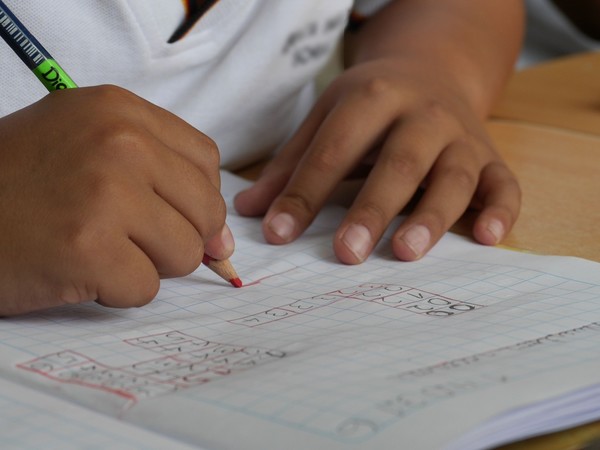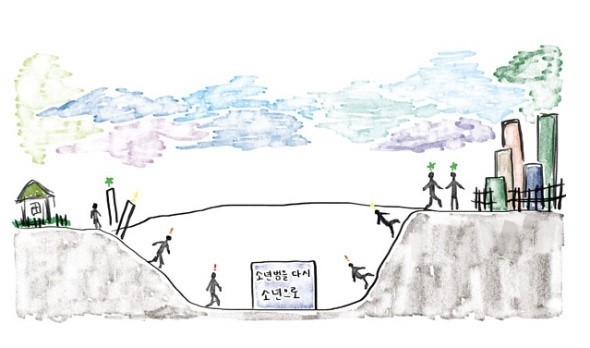
Juvenile delinquency these days
Do you remember the incident that 8 juvenile delinquents drove from Seoul to Daejeon and killed an innocent man who was a freshman working as a delivery driver by a stolen rental car without a license? I vividly remember the incident that caused public outrage as these juveniles haven’t shown the slightest bit of remorse on social media platforms like Facebook.
At the time of arrest, they were all under 13 years old, so they were not subject to any legal punishment. However, three of them were arrested again in 2022 for theft, extortion, and physical assault. At the time of the second arrest, they were over 16 years old, and it seems that they are unlikely to escape punishment under criminal law given that they committed another crime during the probation period.
Considering incidents like this, one might question whether being lenient on juvenile delinquents has any effect on reducing the potential for future crimes. According to data from Statistics Korea, the number of juvenile delinquency cases per 1,000 minors has steadily increased from 2016 to 2020.
Legal definition of juvenile delinquency in many countries
In general, juvenile delinquency is classified by age and actual conduct as follows:
Law violating child: A boy under the age of 10 is too young yet and not subject to any legal regulations, no legal punishment is possible.
Law breaching minor : A boy who is over 10 years old under 14 years old and commits an act that violates the criminal law is considered a juvenile offender under Article 9 of the Criminal Law, and therefore cannot be held criminally responsible. Instead of criminal punishment, protective dispositions can be imposed, such as sending the boy to a juvenile facility or placing him under protective supervision, in order to reduce the likelihood of reoffending.
Criminal youth : A juvenile offender who is over 14 years old but under 19 years old is recognized as having criminal responsibility under the criminal law, and can be subject to punishment. However, if it is determined to be a protective case after a psychological investigation, a protective disposition shall be prioritized instead of punishment. If the offense is a serious crime, the juvenile offender may receive a criminal punishment similar to that of an adult offender, and if imprisonment is imposed, the juvenile offender will be incarcerated separately from adult prisoners or imprisoned in a juvenile correctional facility.
The current standard for criminal minority of 14 years was established in 1953, which means South Korea has been dealing with juvenile offenders based on a standard from 70 years ago. Many countries set the age of criminal minority at 13 or younger, For example, France sets it at under 13, Canada at under 12, England at under 10, and the United States at under 10-13 depending on the state. The Ministry of Justice is currently pushing a bill to lower the age of criminal minority to 13 considering public opinion, international legal standards, and discussions in the National Assembly.
Help and Support in the Educational side

So, how is education currently being provided in the juvenile detention center, and how will it change in the future?
Currently, the majority of students in juvenile detention centers are middle and high school students. However, there is a serious shortage of teachers and educational content within the centers. To address this, the Ministry of Justice has made it mandatory for juveniles in correctional facilities to attend a high school equivalency program and has established university courses to enable them to fulfill their roles as citizens when they return to society.
Furthermore, while the number of high school dropouts, graduates, and current students who have committed crimes as of 2021 is high at 31,280, the number of university dropouts and graduates who have committed crimes (including junior colleges) is significantly lower at 2,087. There were no crimes committed by four-year university graduates or graduate students in 2021. Given that statistics, it appears that there is a clear correlation between crime prevention and higher education, making it necessary to strengthen education in the juvenile detention center.
Additionally, the Ministry of Education's first comprehensive plan for ensuring basic education, announced on October 11, 2022, includes reformatory and plans to conduct student-level assessments and diagnostics and provide corrective materials at the beginning of their stay in the juvenile detention center.
The Ministry of Justice has also promised to collaborate closely with the Ministry of Education to enhance educational content and teacher support for reformatory as part of its comprehensive plan for addressing juvenile crime.
The attitude we must maintain to Juvenile delinquecy

In a country governed by the rule of law, those who violate the laws that form the foundation of society and serve as its promise must certainly receive appropriate punishment for their crimes. However, the purpose of the existence of the juvenile laws is not to be lenient towards juvenile offenders, but rather to help them, who are the future of the nation, to return to society and contribute to the development and well-being of the country as members of the community. I believe in supporting and assisting them is essential as senior of life. There is a proverb that says ‘It takes a whole village to raise a child’. In other words, if the whole village is indifferent to the child, the child will certainly not mature and it will be hard to become a member of the community.
So, schools must provide education on smoking prevention, and anti-bullying, and also conduct education that cultivates respect for the law by inviting legal professionals or persons who have criminal records but successfully reintegrated into society after committing juvenile offenses. By doing so, students can mature into responsible citizens who love and respect the laws that form the foundation of society.

